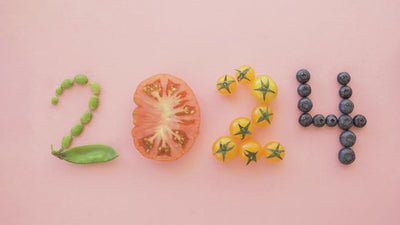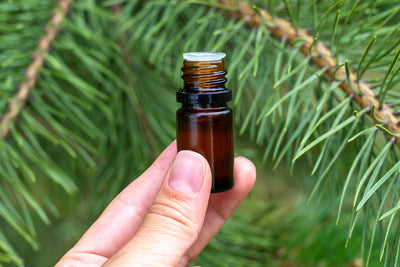A - Z of Unusual Ingredients 🌿
Aa 
Agar Agar
Agar Agar is a mix of carbohydrates that have been extracted from red algea, a type of seaweed. The best thing about versatile Agar Agar powder is it has no taste and no colour which makes it super convenient to use! It sets more firmly than gelatine and stays firm even when the temperature heats up.
How to use: Dissolve Agar Agar in liquid and you’ve got yourself a substitute for gelatin… (We hear vegetarians and vegans cheering!) Add to cold liquids such as fruit juice, milk, stock, or water, bring to the boil while stirring until completely dissolved. Use approximately 1 teaspoon of powder per very 235ml of liquid. Once boiled, simmer for 1 – 5 minutes and continue to stir, add to your recipe then leave to set. Use as a thickening agent for custards, puddings and sauces or make your own veggie jellies, sweets, and marshmallows!
Bb 
Benzoin Gum
Benzoin Gum is the sap (gum resin) that comes from cuts in the trunk of trees that belong to the Styrax family. Benzoin Gum has a sweet scent, similar to vanilla! If you’re struggling to find Benzoin Gum that isn’t heat treated, then you’ve just struck gold! (It doesn’t get much more natural than this).
How to use: Use the rich, warm and slightly woody resin as incense. It blends well with other herbs and resins such as amber, bergamot, coriander, frankincense, juniper, lavender, lemon, myyrh, orange and rose. Turn Benzoin Gum into a tincture or powder and add to homemade soaps. Once you’ve tried adding to Cosmetics, it’s time to get creative with potpourri and essential oils…
Cc
Cola Nut
Cola Nut is the seed of the Cola plant (Cola acuminata) and is used in Nigeria and many West African countries in traditional and cultural ceremonies. Our Cola Nut Powder is pretty cool… It has a bitter taste when fresh but when dried and ground, it surprisingly tastes a lot like nutmeg! It’s also a natural source of caffeine.
How to use: Not only can Cola Nut be used as a tanning agent thanks to its high tannin content, it also can be used as a flavouring agent for homemade sodas!
Dd 
Damar Gum
Damar Gum is a pale tropical tree resin with a milky yellow finish which emits a light lemony scent when burnt. Our high-quality Damar Resin isn’t heat treated which means it’s in its natural state! This golden gum has a light, airy sweet scent and is often used as a key ingredient in eco-friendly beeswax food wraps.
How to use: Use the resin on its own as incense or get creative and blend with other herbs and resins! Did you know, Damar Gum is used in the food industry as a glazing agent and can even be used by painters to make varnish and lacquers for protecting paintings? Top Tip: Pair Damar Gum with beeswax to raise its melting temperature!
Ee 
Eyebright
I spy with my little eye something beginning with E… It’s Eyebright of course! Eyebright is a herb that offers a pleasantly sweet subtle fragrance and a slightly bitter taste, which you may find to be a very pleasant surprise....
How to use: Add 1 – 2 teaspoons of dried Eyebright to boiling water, cover and steep for 5 – 10 minutes before strainging and enjoying as a healthy herbal tea. Don’t forget to sweeten by stirring in some honey or syrup! Eyebright herb can even be used as a tincture...
Ff 
Fenugreek Seeds
You’ve probably heard of Fenugreek but what about Fenugreek Seeds?! These little nuggets of gold are spicy yet slightly bitter. The dried seeds have a curry-like aroma with a sweet, nutty flavour that’s reminiscent of maple syrup and caramelised sugar.
How to use: If you’ve been impressed by a chicken curry or lentil stew served in Indian restaurants and wonder what you’re missing when cooking at home – the answer could lie in the aromatic spice known as Fenugreek! Blend into curry powders, stir into salads or steep in hot water for a healthy herbal tea…
Gg 
Galangal
You’re familiar with tasty turmeric and you know ginger inside out but what about their close relative, Galangal?! (Pronounced guh-lang-gl). Ground Galangal’s flavour is sharper, spicier, and slightly more peppery than ginger, is often used in Indonesian and Thai cuisine and is ground down for your cooking convenience!
How to use: Blend our gorgeous Ground Galangal with garlic, chilli, lemongrass, and lime leaves to make spicy pastes (the key ingredient in the Thai dish Tom Yum Soup) or simply sprinkle into soup, stews, sauces, marinades, and curries to enhance the flavour!
Hh 
Hawthorn Berries
Hawthorn Berries are tiny fruits that grow on trees and shrubs belonging to the Crataegus genus. We can’t get enough of the fresh flavour and tart yet slightly sweet taste these berries have to offer...
How to use: These berries make a useful addition to homemade jams and jellies but don’t stop there! Use Hawthorn Berries to make mouth-watering vinegars and wines or steep in brandy to make a tasty liquor. Fancy a cuppa? Infuse in boiling water, steep and strain for a healthy hawthorn tea.
Ii 
Irish Moss
Despite its name, Irish moss (Chondrus crispus) isn't really a moss: It's a type of algae... (or seaweed). Our Irish Moss definitely has the luck of the Irish! On its own, Irish Moss has a slight seaweed taste that can be easily disguised by other flavours, meaning you can enjoy the many benefits it has to offer without the ocean taste...
How to use: Irish Moss is a vegetarian friendly means of setting jellies, and was formerly used to make the dessert blancmange. It’s also used in body lotions to help sooth skin conditions such as eczema, sunburn and psoriasis. It’s rich in vitamins A,B,C & D which gives it the skin nourishing capabilities valued by the cosmetic industry and is even used as a stabiliser and thickener for products such as shampoo and toothpaste!
Jj 
Jojoba Oil
Jojoba Oil is the liquid produced in the seed of the Simmondsia chinensis plant, a shrub, which is native to southern Arizona and southern California. Jojoba is naturally rich in vitamin E, minerals and zinc and is believed to be a powerful antioxidant which is why it often makes its way into skin and haircare products!
How to use: Any essential oil can be used with jojoba carrier oil, but the following oils make good additions. Bergamot, Clary Sage, Cypress, Fennel, Frankincense, Geranium, Lavender, Mandarin, Myrrh, Neroli, Rose, Patchouli, Petitgrain & Sage.
Kk 
Kelp Powder
Kelp powder is the powdered form of kelp seaweed, which is a form of large, brown sea algae. It’s rich in nutrients and grows quickly in the cold and shallow ocean water. Kelp needs sunlight in order to grow and it absorbs minerals, such as iodine, from the seawater. Our olive-green nutrient-dense Kelp Powder ranges from sweet to nutty in flavour with a salty, ocean-like taste.
How to use: Stir Kelp Powder into vegetable stocks and soups in place of salt or use where a bacon-like flavour is required in vegan and vegetarian dishes! Add extra oomph to your morning smoothies, lunchtime salads and make yourself a healthy herbal kelp cuppa in the evening… Did you know, kelp is often used in toothpaste and shampoo products?!
Ll 
Lovage
Lovage is a tall perennial plant, the leaves being used as a herb, the roots as a vegetable, and the seeds as a spice, especially in southern European cuisine. You’ll love our Lovage Leaves because they have a celery-like flavour with a sweet taste and a hint of anise and parsley!
How to use: We like to use Lovage Leaves as an easy substitute for celery in soups, stews salads, casseroles and stocks but don’t stop there... Whip up a homemade digestive cordial and liqueur! An infusion of Lovage Leaves can even be drunk as a healthy herbal tea, just make sure you infuse in boiling water beforehand.
Mm 
Mullein
Pronounced muh-luhn, Mullein is a flowering plant that’s native to Europe and Asia, with the highest species diversity in the Mediterranean. If you’re familiar with golden Mullein Flowers then you’ll know that they have a scent reminiscent of honey and a slightly sweet flavour!
Mix this floral ingredient into homemade bath bombs, candles and potpourri or obtain a yellow dye from the flowers! Infuse in boiling water, strain, sweeten and serve as a healthy herbal tea or use an infusion of the flowers in the garden as a natural insecticide.
Nn 
Neem Leaves
Neem is a tree that grows in tropical regions such as India... The leaves of the neem tree are bitter with a grassy taste and aroma but once dried they actually have a bittersweet flavour!
How to use: Those with green fingers will know that an infusion of Neem Leaves makes an effective natural insecticide in the garden, our crafty customers will know that a green dye can be obtained from the leaves and those who are crazy for a cuppa will know that when infused in boiling water, strained, and served with honey and lemon, you’ve got a healthy herbal tea! Did you know, neem often makes an appearance in shampoos and conditioners?
Oo
Orris Root
Orris Root is the root of Iris germanica (also known as Queen Elizabeth Root!) If you are familiar with this ingredient then you’ll know its versatile, floral scent is quite iconic in the fragrance industry or maybe you’re familiar with Orris Root’s earthy yet sweet aroma?
How to use: Orris Root Powder as a fixative used to preserve the scent of pomander balls, potpourri and spice wreaths. It helps to keep colour and fragrance longer and is often mixed with cinnamon powder or essential oils. Simply steep in boiling water, strain and serve as a healthy herbal tea!
Pp 
Pau D'Arco
If these reddish, brown shredded dried bark have taken your interest then you’ve got great taste… All you need to know is Pau D’arco is a tree that’s native to South America. Now all you have to do is experience their earthy taste with a slight hint of fruity flavour and woody tones!
How to use: Spice up Pau D’arco tea with this easy recipe... Pour 600ml of apple juice into a saucepan a long with two star anise, one cardamom pod (crushed), 1/2 teaspoon cinnamon powder and two teaspoons or Pau D’arco. Simmer on a low heat while stirring for 10 - 15 minutes, strain and serve! If you’re an avid gardener, then use Pau D’Arco as a natural insect repellent in the garden.





